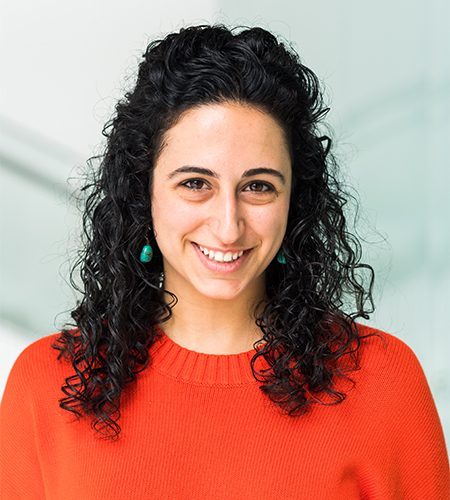“The goal of our project is to help regulatory agencies in India utilize new technology to not only strengthen regulatory efforts but to increase their understanding of population health impacts in order to tailor policies that address air pollution.”
Adrianna Boghozian’s research is focused on developing modeling and experimental deployment strategies for low-cost air quality sensors in order to tailor policy recommendations for Indian cities. Adrianna is interested in the potential for data transparency in urban policy design and implementation as well as the effect of information disclosure policies on human and institutional behavior. With the Tata Center, she is excited about the opportunity to impact and learn from the developing world.
Adrianna is a Master’s candidate in the Technology & Policy Program at MIT. She is currently working with Professor David Hsu on deployment strategies for low-cost air quality sensors in the densely built environment of urban India. Adrianna obtained her Bachelor’s Degrees in Mathematics and Economics from the University of Tennessee, Knoxville. In her spare time, she enjoys hiking, cooking, playing soccer, and exploring new breweries.
What brought you to study at MIT?
In considering master’s programs in computer science and statistics, I was excited to not only take relevant classes but apply my studies directly to real-world issues. Along with its world-renowned resources, MIT offers immense opportunities in applied research that enable direct societal impact.
How did you go from a background in Economics and Math to the Technology & Policy Program?
I was predominantly attracted to the Technology and Policy Program due to its home in MIT’s Institute for Data, Systems, and Society (IDSS). After my undergrad, I was able to use my skill set in math and programming to contribute to a range of applied research that impacted policy, from climate change research at Oak Ridge National Laboratory to administrative law and policy at Stanford Law School. I knew that I wanted a graduate program that would allow me to further my computational engineering skillset while stressing the importance of understanding technology’s broader societal context.
Are you working with collaborators in India? Can you talk about that experience and how it supports your research?
This project is the first time I’ve worked in the developing world, let alone India! It’s been extremely beneficial to meet with fellow researchers, NGOs, and government entities addressing air pollution in India since they have valuable on-the-ground insight. I was able to travel to Delhi over IAP this January and was shocked by the level of air pollution I witnessed firsthand.
What are your aspirations for this project?
Air pollution is such an important health issue that predominantly affects citizens of mega-cities, particularly in the developing world. The proliferation of low-cost sensors has given rise to revolutionary ways for citizens and regulatory bodies to measure, interact with, and understand our environment. The goal of our project is to help regulatory agencies in India utilize this new technology to not only strengthen regulatory efforts but to increase their understanding of population health impacts in order to tailor policies that address air pollution.
What are the key things you’ve learned in your first several months as a Tata Fellow?
The Tata Fellowship has been an invaluable opportunity to learn about technology’s role in attempting to address some of these intractable issues in India. It’s been enlightening to note the differences between developing and emerging markets and the importance of understanding the cultural, societal, and political context before boldly prescribing a technical solution.
What’s your favorite hiking spot in the world?
Living in the Bay Area the last 4 years before grad school has spoiled me when it comes to hiking. Big Basin Redwoods State Park was always a favorite to take visitors from out of town to, it contains some of the oldest redwood trees in the world. Additionally, I loved Sequoia/King’s Canyon National Park. I went for the first time a few years ago for Thanksgiving break and the park was covered in snow! It was pretty majestic witnessing these bright orange trunks in contrast with the serene white background.



